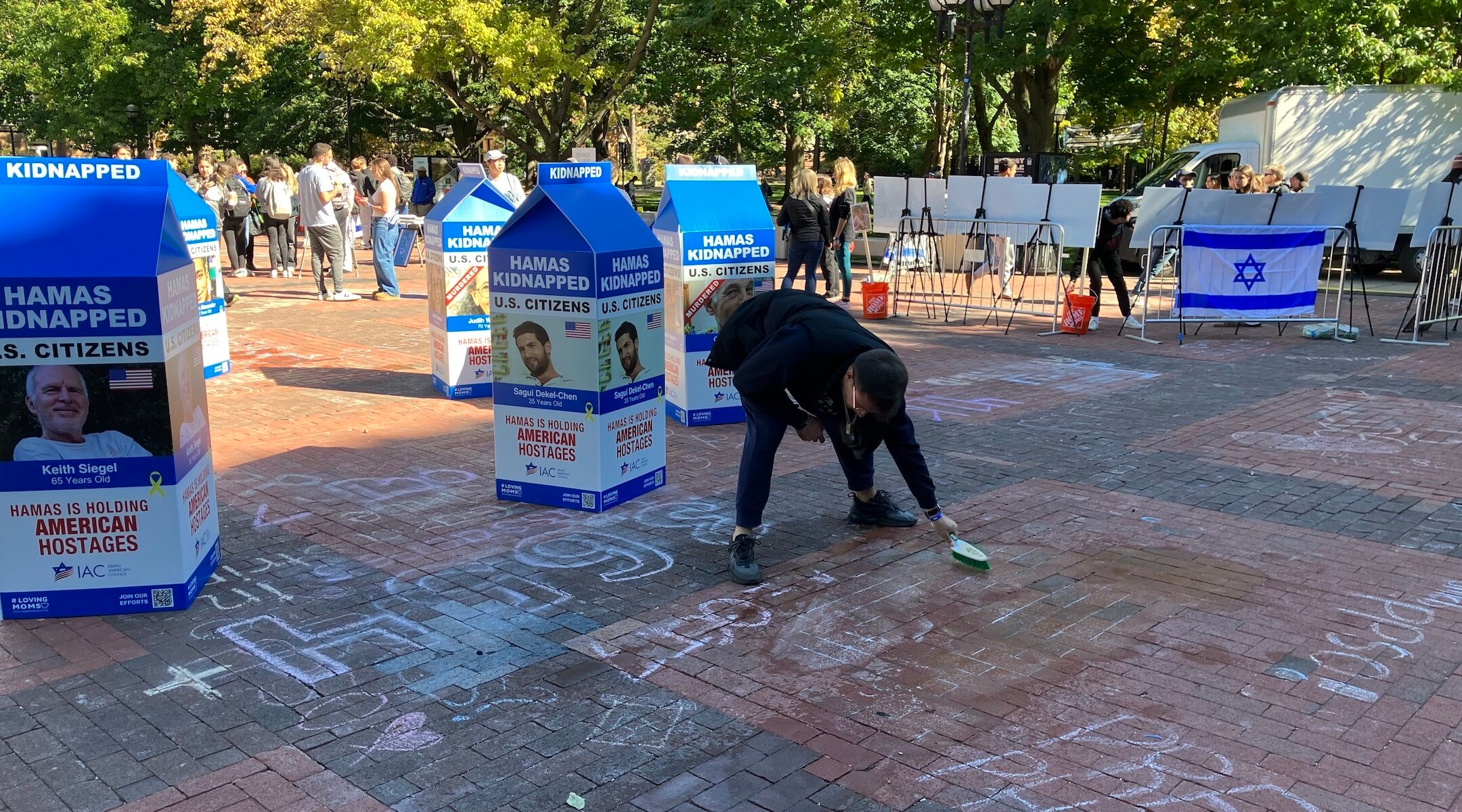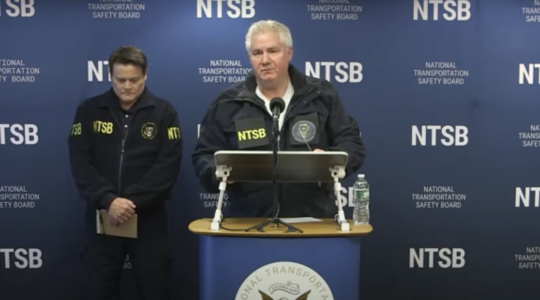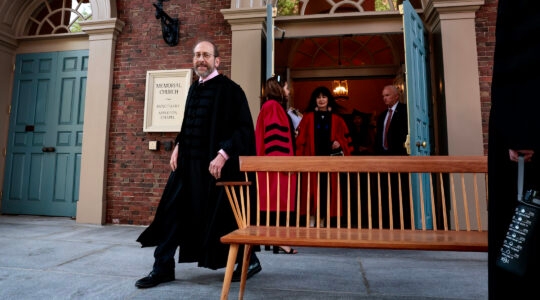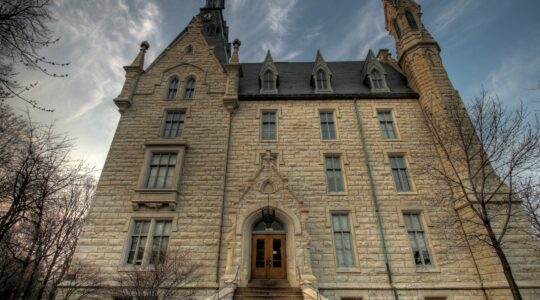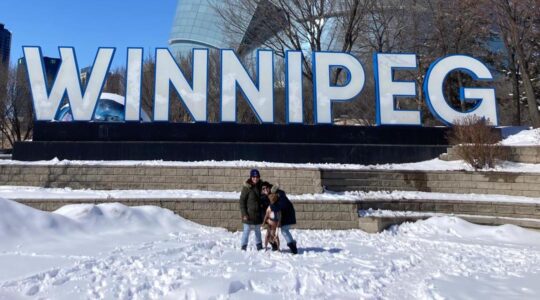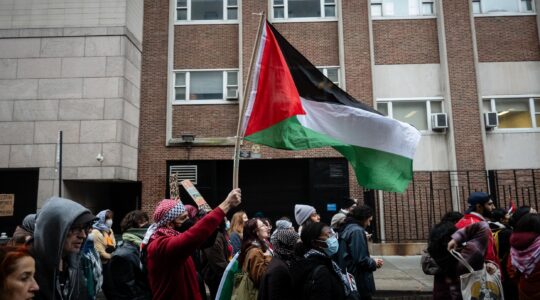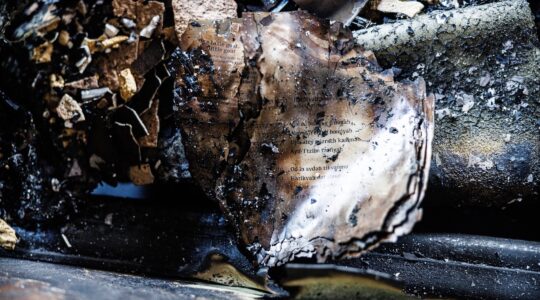ANN ARBOR, Michigan — At midday on the one-year anniversary of Hamas’ deadly invasion of Israel, hundreds of Israeli and American flags dotted the main lawn of the University of Michigan’s campus, known as the Diag — part of an expansive pro-Israel display months in the making.
On a lawn one block north, the graduate student union led an afternoon “walkout for Gaza” that steered clear of the pro-Israel display.
And as the Diag transformed into a Jewish community vigil to mourn those killed on Oct. 7, a coalition of pro-Palestinian student groups held an event on “Debunking Zionist Myths” at a secret location.
The opposing events took place in uneasy coexistence on Monday, in a sharp departure from the confrontations that played out last spring, when pro-Palestinian activists erected an encampment on the Diag to protest Israel’s war in Gaza.
Jewish students and groups denounced the encampments, part of a wave of similar demonstrations across the country, as antisemitic. At Michigan, the protesters used “Long live the Intifada” as a slogan, marched into classrooms and disrupted exams. The administration ultimately removed Michigan’s encampment by force and has since sought to prevent disruptive protests on campus.
“The university has really put their foot down, and I think people know that they’re not messing around,” said Ryan Silberfein, the president of Michigan Hillel’s student board.
Even with the increased enforcement, this has been a semester of uneasy campus politics surrounding Israel at Michigan, making the scene at the Diag an uncharacteristic oasis of calm. That same day, pro-Palestinian activists defaced a Detroit-area house owned by university president Santa Ono, who has sent several messages of support to the Jewish community in recent months, as well as another owned by the university’s chief financial officer. The graffiti read “Coward,” “Divest now,” and “Intifada,” and included upside-down triangle symbols associated with Hamas.
It was a reminder of the darker strains of activism that have coursed through the Michigan community this year. The undergraduate student government is currently led by a party that has vowed to defund all student activities unless the university divests from Israel. A Jewish member of the school’s Board of Regents saw his business vandalized. The school’s chapter of the anti-Zionist group Jewish Voice for Peace, though unsanctioned by the university, was nevertheless reprimanded by Ono after recently posting “Death to Israel” on Instagram. And the state’s Jewish attorney general, Dana Nessel, recently charged 11 encampment protesters with trespassing, resisting arrest and other charges, accusing them of engaging in “violent and criminal” behavior — leading to a war of words between Nessel and Palestinian-American U.S. Rep. Rashida Tlaib.
There have also been physical threats to Jews at the school, which have not yet had any documented connection to the activism, including a reported antisemitic assault on a student last month. Last week, a home invasion during a university rabbi’s off-campus Rosh Hashanah dinner. Some Jewish students say they plan to launch a volunteer safety brigade, known in Hebrew as “shmira,” or protection.
Silberfein said the Jewish and pro-Israel groups had meant their Oct. 7 memorial display on the Diag to be like Hostages Square in Tel Aviv — a gathering place for people to grieve, rather than advocate for any particular Middle East policy. Alongside the flags, the display had spaces where students could choose to pray or pay tribute to the hostages being held in Gaza, in addition to a collection of photographs from the war that reflected Israeli, Palestinian and Lebanese suffering.
“The hope is that people are just respectful and see that this is a day of mourning and of pain and grief for a lot of people,” Silberfein said.
Similar scenes played out at colleges across the United States on Monday. Jewish and pro-Israel students sought to commemorate the attack on Israel — and the year of grief since — while pro-Palestinian students marked the beginning of what they characterize as a genocide in Gaza.
Anticipating repeats of painful scenes that played out at dozens of campuses last spring — and increasingly appear to have taken a toll on donations and applications — some administrations tried to blunt the protests ahead of time. Many enacted new rules designed to constrain demonstrations and threaten consequences for disruptive protests.
Others took aim at Oct. 7 specifically: The University of Maryland, for example, revoked a permit for an Oct. 7 pro-Palestinian rally on its campus before being ordered by a judge to allow the demonstration. And Tufts University, near Boston, announced that it had suspended the campus chapter of Students for Justice in Palestine, citing violations of university policies including social media posts exhorting students to join in Oct. 7 protests.
And while most student groups, regardless of orientation, used the occasion to mourn the bloodshed of the past year, a few projected messages of glee. “Happy October 7th everyone!” the SJP chapter at Pennsylvania’s Swarthmore College posted on Instagram. The group also announced a fundraiser “in honor of this glorious day and all our martyred revolutionaries.”
But worst-case scenarios — widespread repeats of the most striking confrontations from the spring — did not come to pass on Monday. Instead, many campuses across the country were home to multiple demonstrations but relatively few conflagrations. Memorial vigils organized largely by campus Hillel chapters went off without a hitch, as pro-Palestinian students staged rallies elsewhere.
As at Michigan, many of the memorial services took place in the same locations that had been occupied by pro-Palestinian student encampments in the spring. At Northwestern University in the Chicago area, for example, dozens of Jewish and pro-Israel students gathered on Deering Meadow, where the school’s encampment was installed before its leaders struck a deal with administrators to disband.
There were some exceptions to the relative calm. At Columbia University, the launching pad of the encampment movement and an epicenter for pro-Palestinian protest, hundreds of students participated in a walkout that streamed through the center of campus.
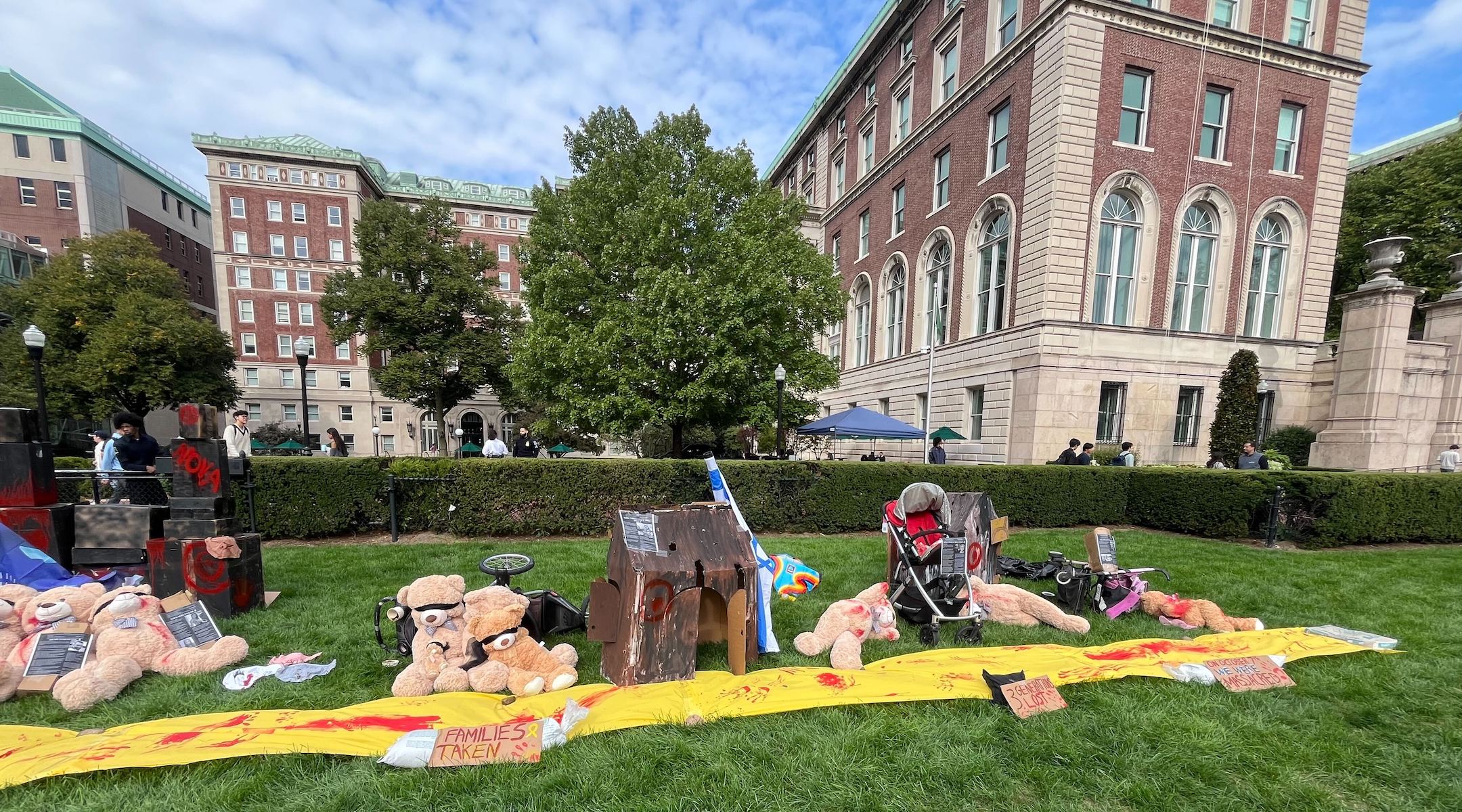
A display of teddy bears on Columbia’s campus on Oct. 7, 2024 meant to symbolize Israelis killed and taken hostage one year earlier. (Courtesy Yakira Galler)
Outside Columbia’s gates, which have been closed to non-students for months because of the protests, Jewish advocates who have charged Columbia with being unsafe for Jewish students held their own rally. Organized by the pro-Israel group End Jew Hatred, the rally was advertised as “Flood Columbia” — a subversion of the language used by Hamas on Oct. 7 and by some pro-Palestinian groups since.
The rally, which drew about 200 people, was attended primarily by non-students, including Columbia assistant professor Shai Davidai, who has gained a large following on social media for his no-holds-barred lambasting of the school’s response to antisemitism and anti-Israel activity.
Davidai asked attendees to recall not only Oct. 7, 2023, but also Oct. 7, 1944, drawing parallels between the violence of Hamas’ attack and the atrocities of the Holocaust. He also sought to comfort his fellow Israel advocates.
“Don’t talk about what’s happening inside Columbia,” he said. “Talk about what’s happening in your hearts. Be here for each other, help each other and grieve together.”
Guests brought Israeli and American flags and wore their yellow ribbon pins, “Bring Them Home” T-shirts, and held “kidnapped” posters with the faces and names of those still captive in Gaza. There was one brief interruption from a counter-protester.
But even at Columbia, the anniversary protests appeared to end without physical conflict or arrests. Videos showed pro-Palestinian students on campus walking past a student wrapped in an Israeli flag who stood in their path, a sharp contrast to last spring when footage showed direct confrontations.
And the space that had been occupied in the spring by a pro-Palestinian encampment was filled with a display in commemoration of the victims of Hamas’ attack: Students walked around giant milk cartons bearing the names and photos of hostages held in Gaza.
Yakira Galler, a Jewish student at Barnard College, said commemorating the Oct. 7 attack on campus “was really meaningful and powerful. I’m glad that we did it, for us to be able to mourn together.”
She added, “I think today showed that there’s a really big silent majority of people who do condemn terrorism and know that the hostage issue is not a political issue.”
Still, she said she felt far from encouraged as she expects a second year of protest and campus conflict.
“It’s literally been a whole year and we’re still doing the exact same thing,” she said. “It’s really disheartening and frustrating. It’s definitely upsetting.”
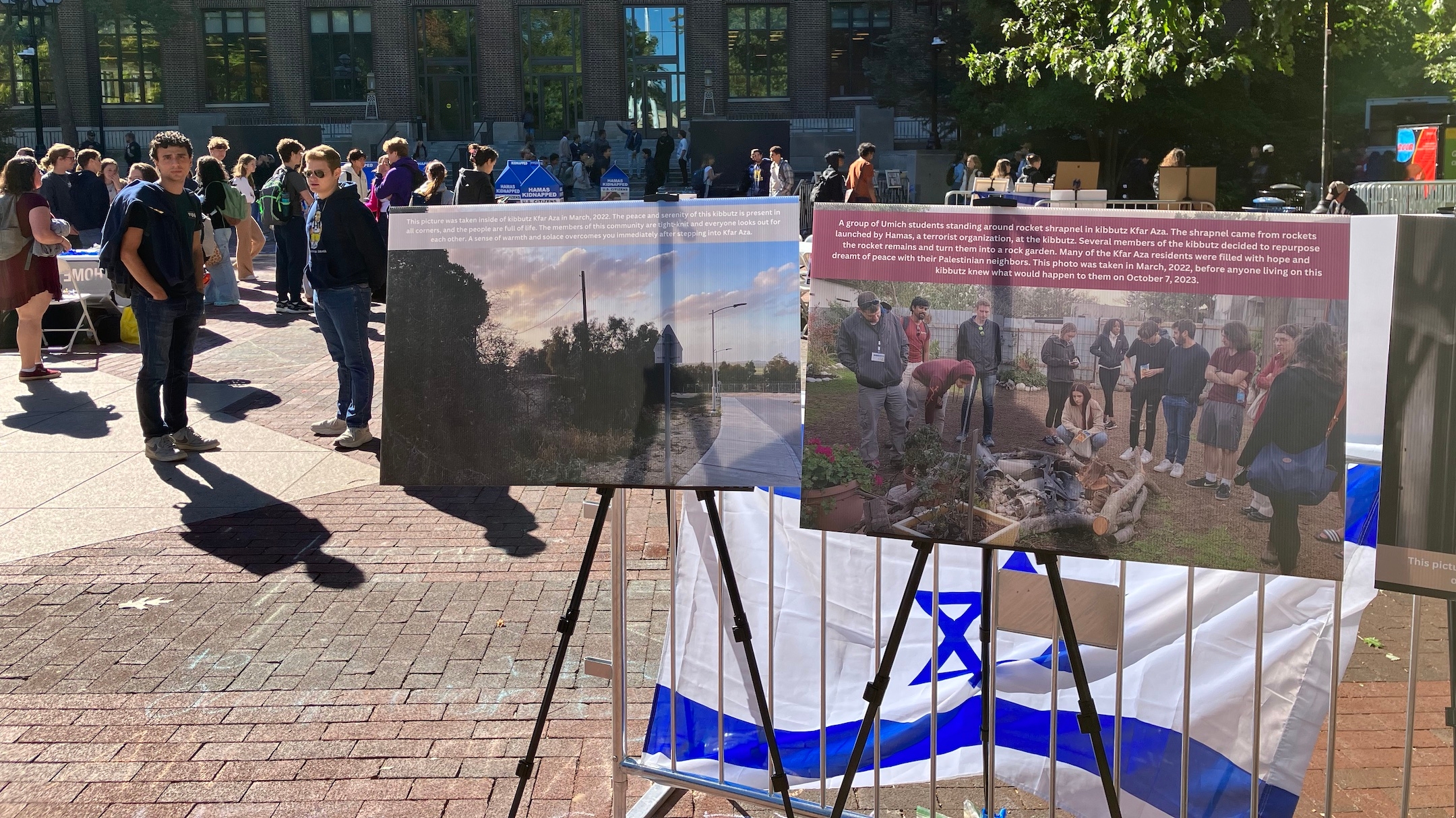
Students participate in a display marking the anniversary of Hamas’ Oct. 7, 2023, attack on Israel at the University of Michigan, Oct. 7, 2024. (Andrew Lapin)
Back at Michigan, pro-Israel students said they had taken steps to ensure a smooth Oct. 7 commemoration, formally reserving the Diag well in advance. That ensured no one else could use the central space for events on the day.
Heavily patrolled by security officers and police, the scene was relatively serene at midday. One group of students wearing keffiyehs observed the display from a distance before turning around. Another student approached a board asking for “Messages of Hope” and, giggling to her friends, wrote “Free Palestine” on a card; organizers swiftly removed it.
But the majority of students spending extended time at the event appeared to be Jewish. It was a partnership among Michigan Hillel, Chabad, and Ann Arbor Jewish groups and congregations including the local federation, JCC, and Reform, Conservative and Reconstructionist synagogues.
Some attendees were new to Jewish life on campus, something that Rabbi Davey Rosen, the CEO of Michigan Hillel, said was emblematic of the last year. Attendance at Hillel events is way up, he said, and many students are returning over and over as they seek community at a challenging time.
“There’s a girl walking over there. She walked into Hillel this past Friday night for the first time,” Rosen pointed out. “She’s like, ‘Hey, only one of my parents is Jewish, is it all right if I come in?’ I was like, ‘Amazing!’”
Silberfein said it was important to the student organizers to reflect losses on both sides of the Israel-Hamas war.
“It was definitely not a hard decision” to include the Gaza photos in the photo display, she said. “We’re trying to hold space for people mourning on both sides. We understand that war isn’t good for anybody, and there are going to be people suffering on both sides, whether or not you necessarily agree with a person’s opinions on the situation or what they think the solution should be.”
The event’s success did not feel assured. On Sunday night, someone chalked anti-Israel messages on the Diag, and organizers spent time early Monday washing the messages away. But the space was free of protest all day as students of all backgrounds streamed through campus.
“I think having this memorial here gives the opportunity to get more people to know our view and what we’re feeling,” said Aaron Blower, a senior who said he was not part of any Jewish groups on campus. “We’re a community, we’re going to mourn. We’re going to be together, and we can’t let the fear of disruptors get in the way.”
JTA has documented Jewish history in real-time for over a century. Keep our journalism strong by joining us in supporting independent, award-winning reporting.
